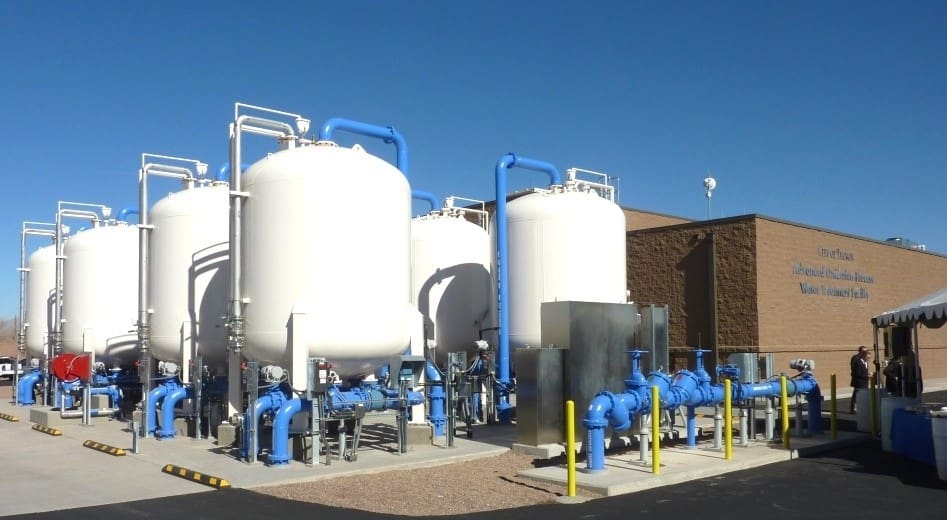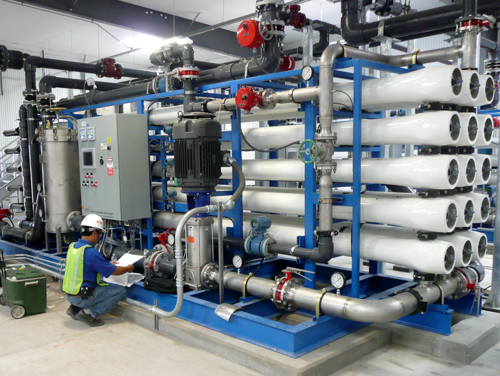Your Guide to PFAS Treatment Technologies and Benefits
The prevalence of PFAS contamination in water resources requires a thorough understanding of available therapy technologies. Various approaches, such as turned on carbon filtering, ion exchange systems, and advanced oxidation processes, existing unique advantages in addressing these persistent toxins. Each innovation not just targets certain PFAS compounds however also plays an essential duty in improving overall water high quality and protecting ecological stability. As areas face the effects of PFAS exposure, the option of a proper treatment technique becomes significantly essential, prompting a closer assessment of these modern technologies and their respective benefits.
Recognizing PFAS Contamination
Recognizing PFAS contamination is crucial for addressing its pervasive effect on ecological and human health (m270 pfas treatment). Per- and polyfluoroalkyl compounds (PFAS) are a group of synthetic chemicals extensively utilized in numerous commercial and consumer items due to their water- and grease-resistant homes. Generally discovered in firefighting foams, non-stick pots and pans, and water-repellent textiles, PFAS have actually gotten in the setting via manufacturing processes, wastewater discharges, and seeping from land fills
Once released, these compounds continue the atmosphere, bring about widespread contamination of dirt and water resources. Their distinct chemical structure, characterized by strong carbon-fluorine bonds, renders them resistant to degradation, resulting in a sensation called "for life chemicals." PFAS can gather in the human body and the food chain, possibly causing damaging wellness effects, including immune system interruption, developmental concerns, and an increased risk of particular cancers.
Regulative agencies and health and wellness organizations are progressively recognizing the value of PFAS contamination, triggering initiatives to monitor, examine, and mitigate its results. Comprehending the paths of PFAS contamination is vital for educating public policy and establishing effective approaches to safeguard both ecological and human health.
Introduction of Therapy Technologies
Different therapy technologies have actually been created to deal with the obstacles positioned by PFAS contamination in water and dirt. These innovations can be generally classified right into numerous classifications, each with its unique devices and efficiency in removing PFAS substances.
One famous approach is ion exchange, which uses resin products to capture and get rid of PFAS from contaminated water. This approach is particularly effective for short-chain PFAS and can attain considerable reductions in concentration degrees. Another technology, advanced oxidation procedures (AOPs), uses strong oxidants and ultraviolet light to damage down PFAS right into less hazardous materials. AOPs are suitable for dealing with a large range of PFAS compounds yet may need cautious optimization to take full advantage of efficiency.

Triggered Carbon Purification
Activated carbon filtration is a commonly made use of technique for the removal of PFAS from infected water, understood for its capability to adsorb a wide series of natural compounds. This modern technology uses turned on carbon, a very permeable material with a substantial surface, which assists in the binding of PFAS molecules with physical adsorption. The effectiveness of activated carbon in removing PFAS is influenced by several factors, including the sort of carbon utilized, the get in touch with time, and the concentration of PFAS in the water.
One of the advantages of activated carbon filtration is its flexibility; it can be executed in various configurations, such as granular activated carbon (GAC) systems or powdered turned on carbon (PAC) systems. GAC systems are generally utilized in larger-scale applications, while political action committee can be used in smaller or temporary arrangements. In addition, the modern technology is fairly simple to operate and keep, making it easily accessible for lots of water treatment facilities.

Ion Exchange Solution
Ion exchange systems represent an additional efficient method for the removal of PFAS from polluted water, complementing methods like turned on carbon filtering. These systems operate on the concept of trading ions in the water with ions held on a resin material. Ion exchange materials can be particularly developed to target the negatively charged PFAS substances, properly catching them and allowing cleaner water to pass through.
Among the main benefits of ion exchange systems is their capability to eliminate a large range of PFAS, consisting of both long-chain and short-chain versions. This convenience makes them suitable for various applications, ranging from metropolitan water treatment to industrial procedures. In addition, ion exchange systems can usually achieve lower discovery limits go to website for PFAS compared to some various other therapy methods, therefore boosting water quality.
However, it is necessary to monitor and handle the regrowth of ion exchange media, as the efficiency can decline in time because of saturation. Correct maintenance and replacement of the resin are vital for maintaining the system's effectiveness. Generally, ion exchange systems provide a trusted and efficient solution for PFAS removal, contributing substantially to secure alcohol consumption water requirements and environmental management.
Advanced Oxidation Processes
Advanced Oxidation Processes (AOPs) utilize powerful oxidants to successfully weaken PFAS compounds in polluted water. These cutting-edge therapy approaches produce extremely responsive species, such as hydroxyl radicals, that can break down complicated PFAS particles into less dangerous results. m270 pfas treatment. AOPs normally use mixes of ultraviolet (UV) light, ozone, hydrogen peroxide, or Fenton's reagent, enhancing the oxidation potential and enhancing degradation efficiency
The key benefit of AOPs depends on their capacity to target a wide variety of PFAS compounds, including both long-chain and short-chain variants. This flexibility is vital, as PFAS contamination commonly includes blends of different compounds with differing chemical frameworks. Moreover, AOPs can be integrated into existing water therapy systems, making them a practical remedy for many towns and industries.
Nevertheless, the application of AOPs can be resource-intensive, calling for cautious factor to consider of operational expenses and energy intake. Additionally, while AOPs work in breaking down PFAS, they might not totally eliminate all results, demanding more therapy actions - m270 pfas treatment. Generally, AOPs stand for an appealing avenue for attending to PFAS contamination, contributing to cleaner water sources and enhanced public health and wellness protection

Final Thought
In final thought, resolving PFAS contamination needs a detailed understanding of readily available treatment visit site modern technologies. Triggered carbon purification, ion exchange systems, and advanced oxidation processes each existing special benefits for successfully getting rid of these dangerous substances from water resources. By selecting the ideal innovation, neighborhoods can improve water quality, protect public health, and mitigate the ecological risks related to PFAS direct exposure. Continued research and application of these techniques are crucial for effective administration of PFAS contamination in impacted locations.